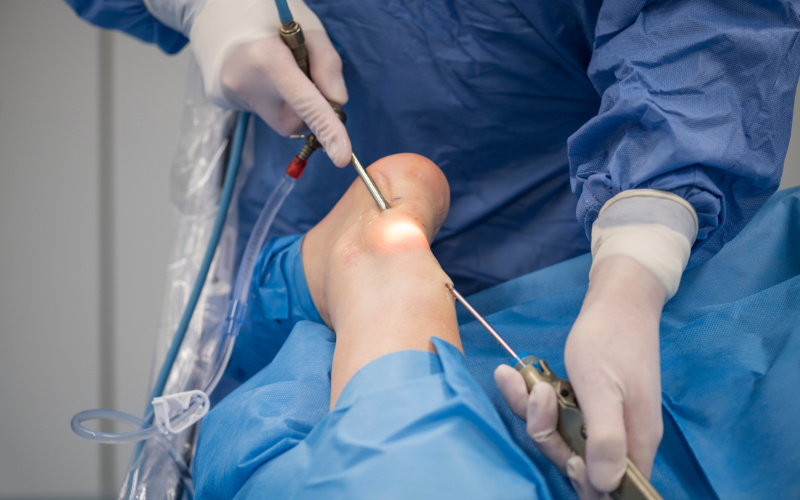ANKLE ARTHROSCOPY
Ankle arthroscopy is a surgical procedure that involves the use of a small camera, called an arthroscope, to diagnose and treat problems within the ankle joint. This minimally invasive technique allows orthopedic surgeons to visualize the inside of the ankle without the need for large incisions.
Procedure
Preparation :- The patient is typically positioned on the operating table, and anesthesia is administered to ensure comfort during the procedure.
Incisions :- Small incisions, usually less than one centimeter in length, are made around the ankle joint. These serve as access points for the arthroscope and specialized instruments.
Arthroscopy :- The arthroscope, a thin tube with a camera on its tip, is inserted through one of the incisions. The camera transmits real-time images of the inside of the ankle joint to a monitor, allowing the surgeon to examine the bones, cartilage, ligaments, and other structures.
Treatment :- Depending on the findings, the surgeon may use additional incisions to introduce instruments to address specific issues. Common procedures during ankle arthroscopy include the removal of loose fragments, debridement of damaged cartilage, repair of ligaments, and treatment of conditions like impingement syndrome.
Closure :- After the necessary repairs or adjustments are made, the instruments are removed, and the incisions are closed with stitches or adhesive strips.
Common Conditions Treated with Ankle Arthroscopy:
Cartilage Damage :- Arthroscopy can be used to address injuries or degenerative changes in the cartilage within the ankle joint.
Ligament Injuries :- Tears or instability in ankle ligaments can be repaired or reconstructed using arthroscopic techniques.
Impingement Syndrome :- Arthroscopy can help alleviate impingement, where bony or soft tissue structures in the ankle cause pain during movement.
Synovitis :- Inflammation of the synovial lining of the ankle joint can be treated through arthroscopy.
Loose Bodies :- Small fragments of bone or cartilage that may be causing pain or restricting movement can be removed.
Advantages of Ankle Arthroscopy:
Minimally Invasive :- Small incisions reduce trauma to surrounding tissues.
Faster Recovery :- Generally, patients experience quicker recovery times compared to traditional open surgery.
Diagnostic Accuracy :- The arthroscope provides a detailed view of the ankle joint, aiding in accurate diagnosis and targeted treatment.








